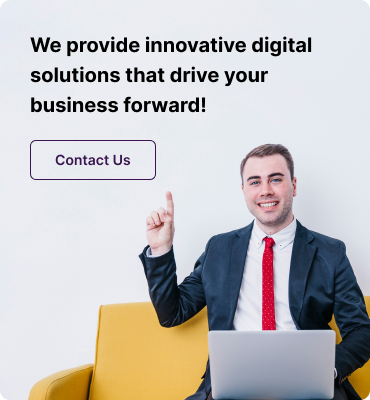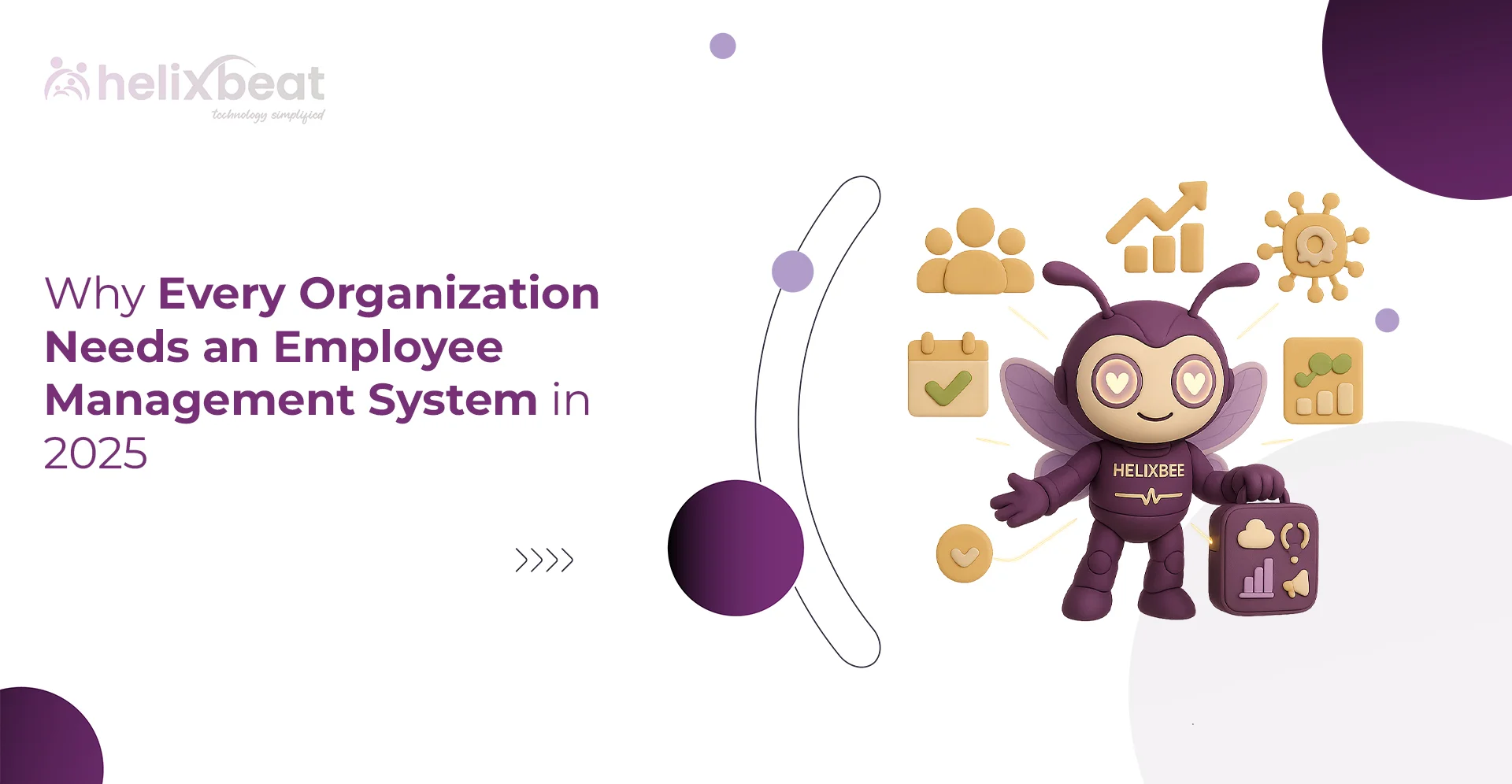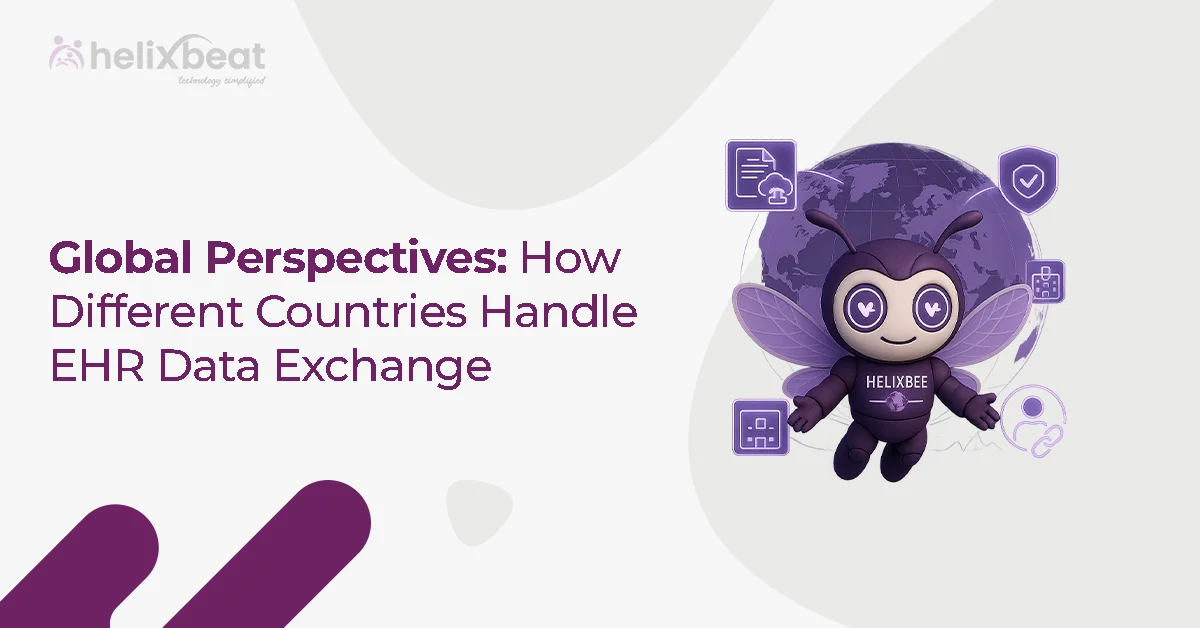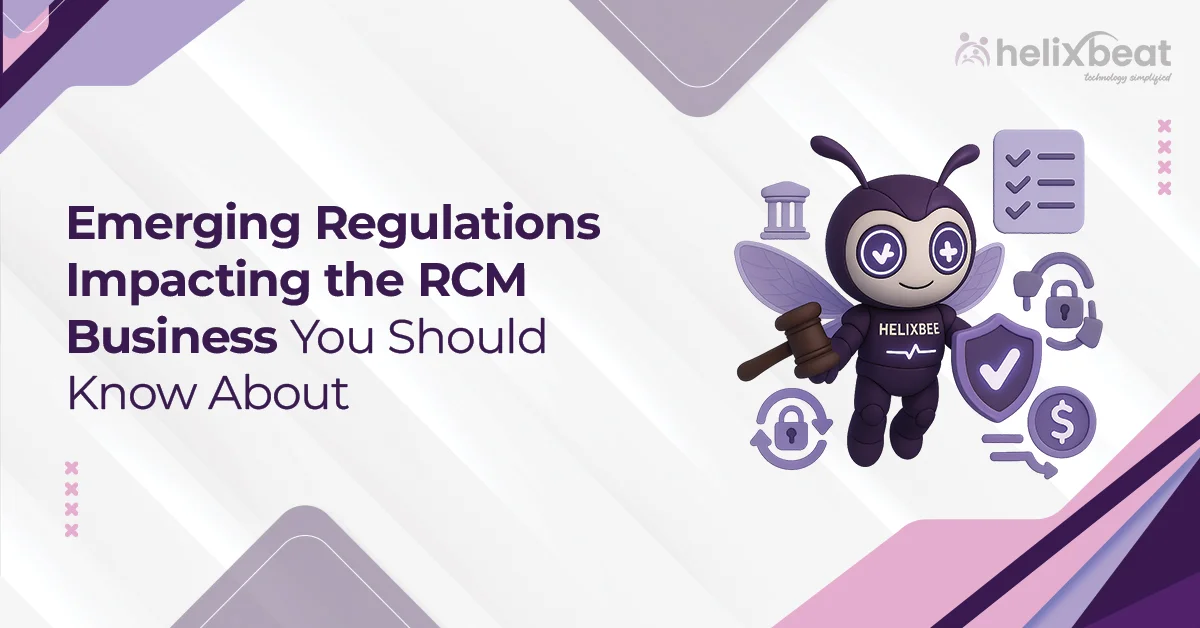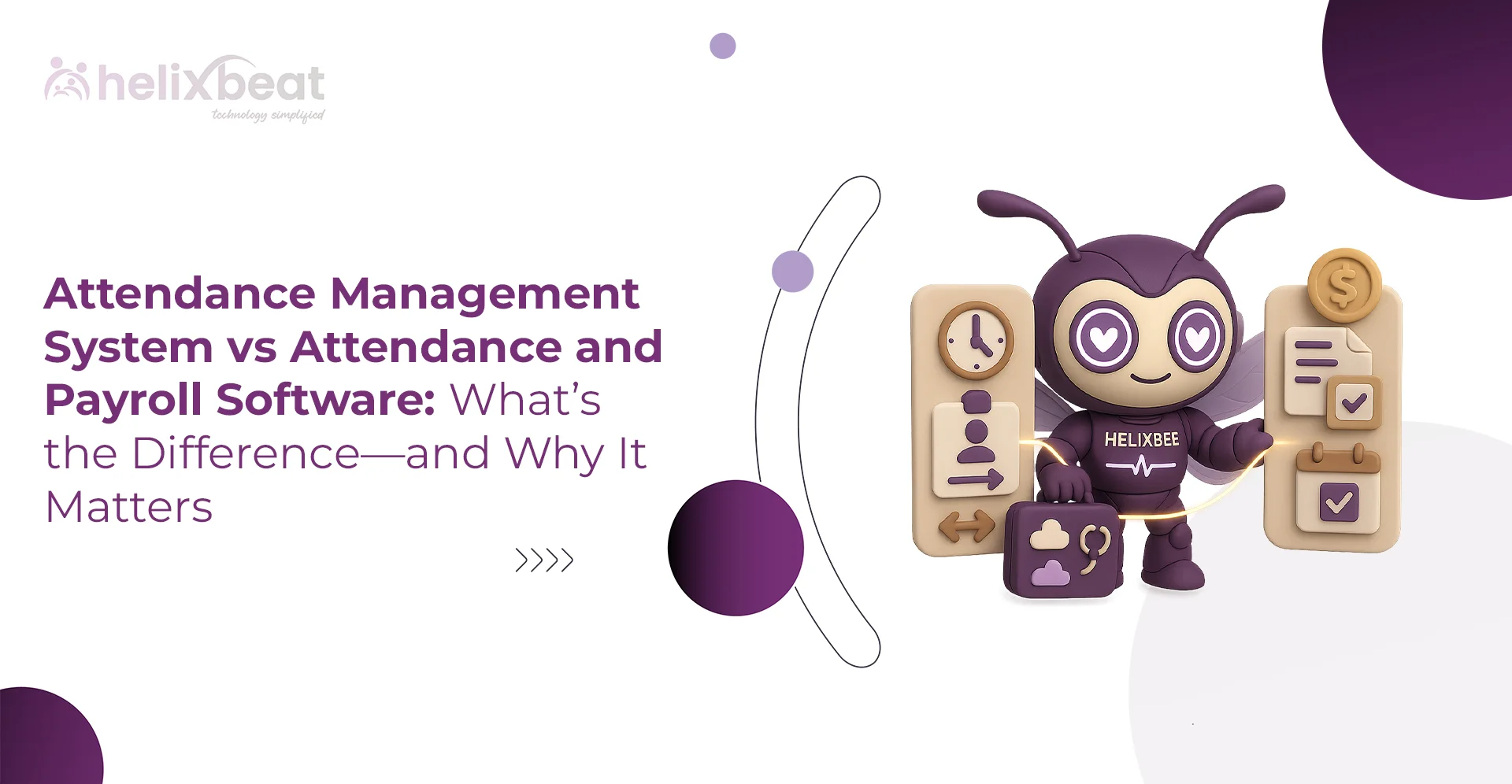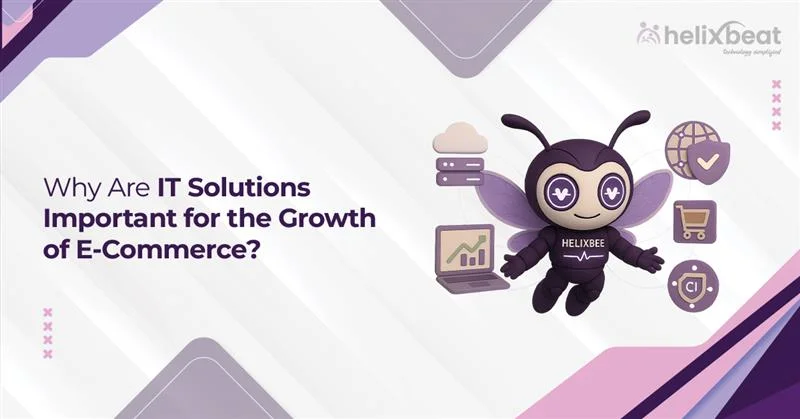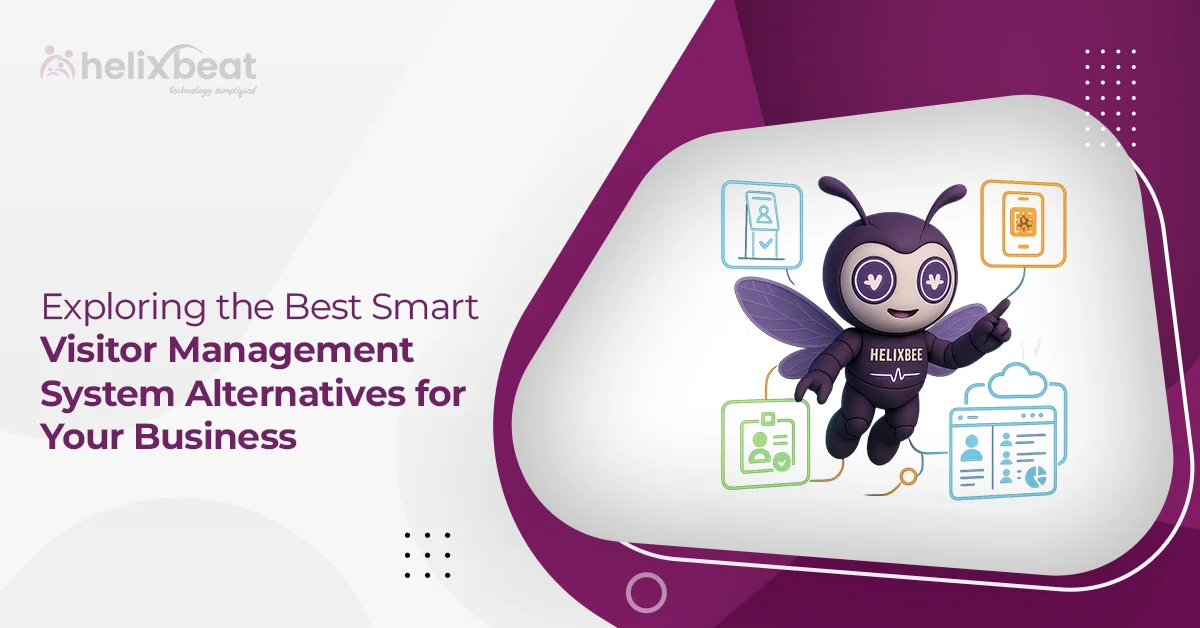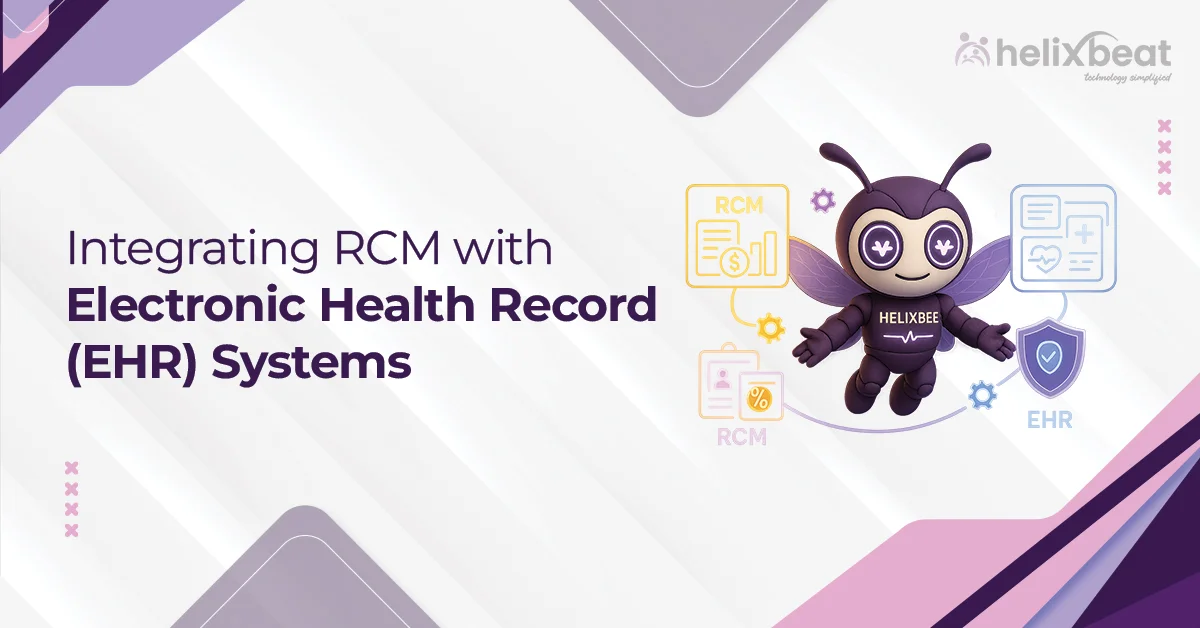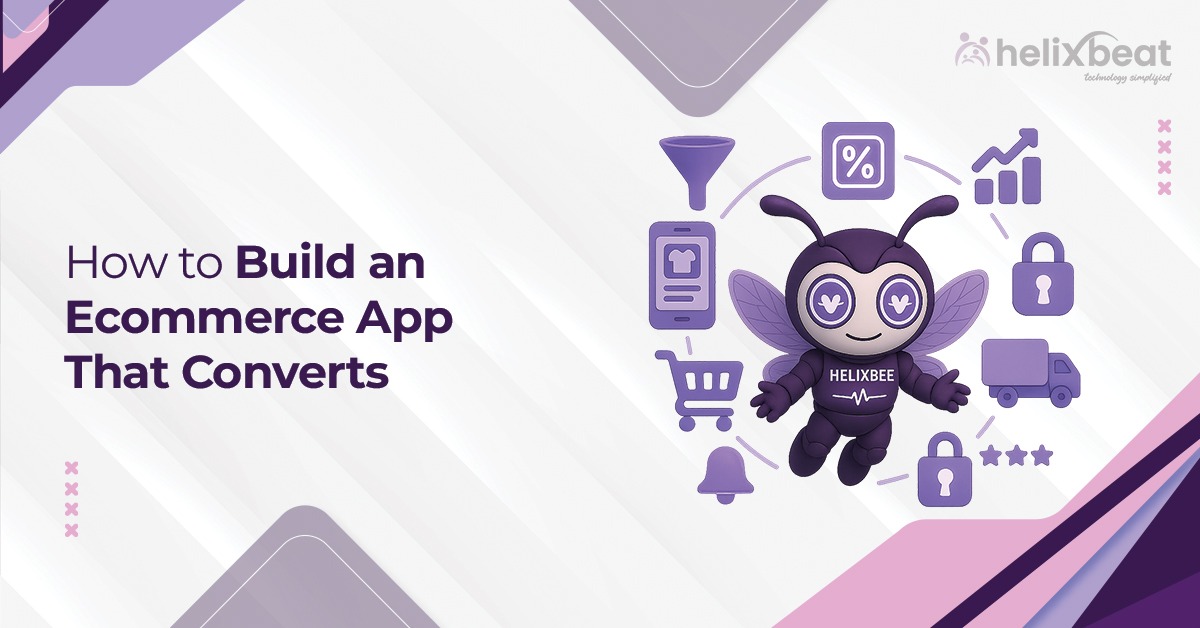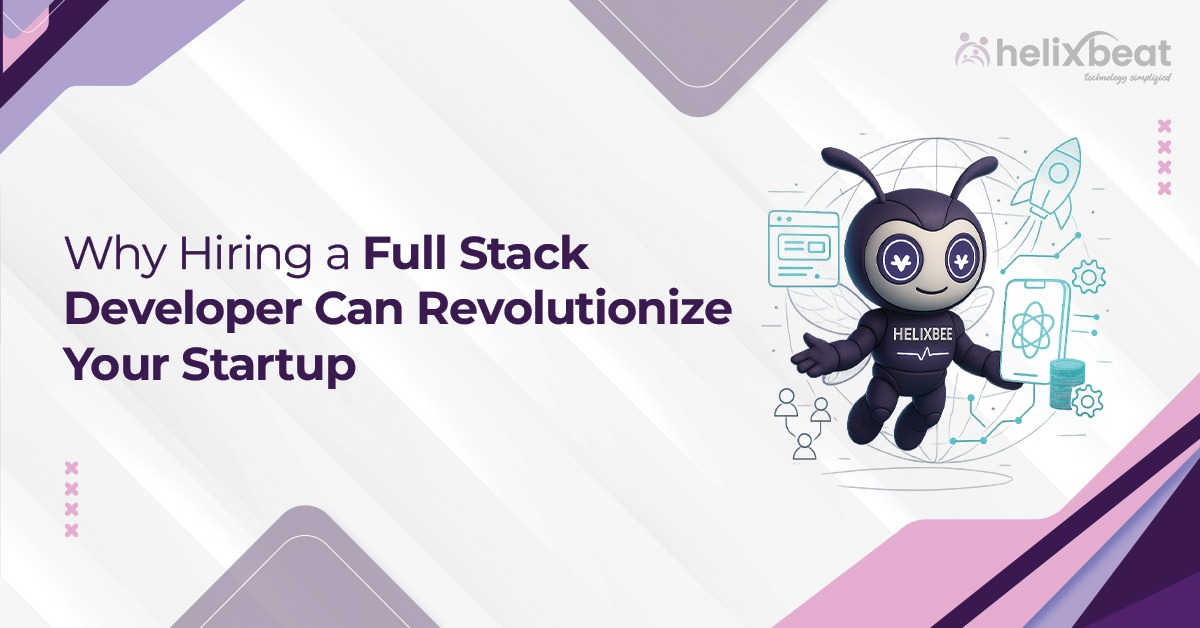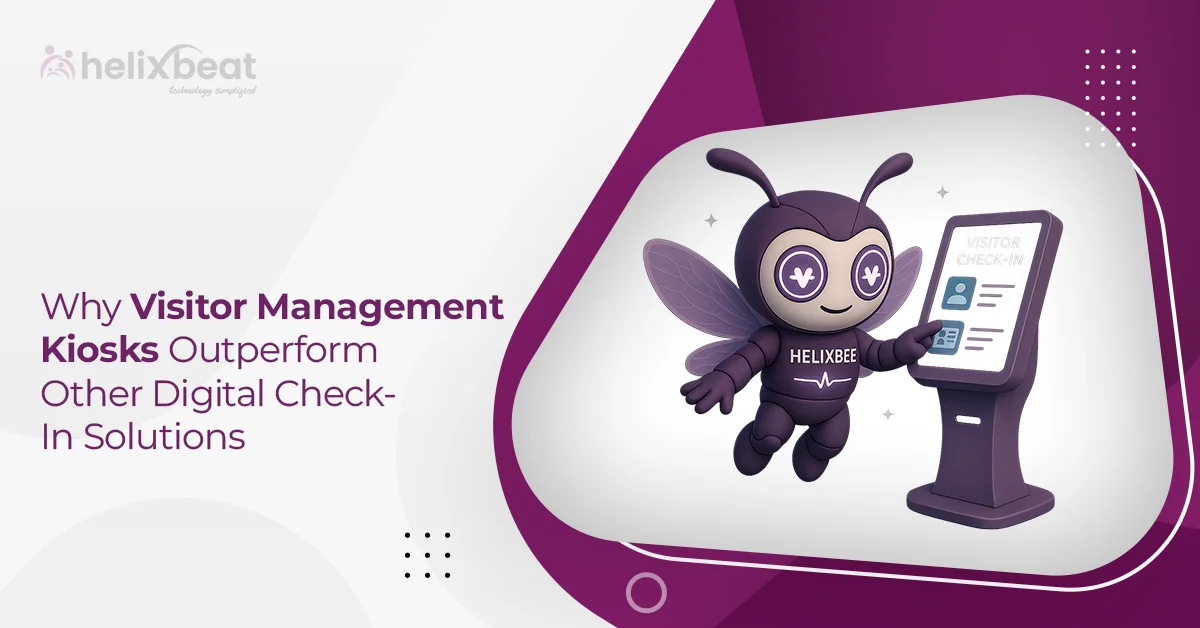Employee Management System has become an essential tool for businesses in 2025. Organizations are managing a workforce that expects transparency, speed, and fairness, while compliance rules are becoming stricter and manual HR processes are too slow to keep up. Without the right technology, businesses risk losing valuable time, making costly errors, and facing employee dissatisfaction.
This is why more companies are turning to advanced platforms like Synergy by Helixbeat. Synergy goes beyond automating payroll or attendance—it helps create a connected, efficient, and satisfied workplace. Let’s explore the key reasons why every organization, whether big or small, needs an Employee Management System today.

Table of Contents
Top Reasons to Use an Employee Management System in 2025
An Employee Management System is no longer optional—it’s essential for businesses in 2025. From streamlining attendance and leave processes to automating payroll and ensuring smooth HR data migration, it helps organizations save time, reduce errors, and improve employee satisfaction. Tools like an employee attendance management system, employee leave management system, employee management system app, and Employee Leave Tracker make workforce management simple, accurate, and efficient.
1. Automation Saves Time and Reduces Errors
Manual HR tasks like calculating payroll, tracking attendance, or approving leave consume hours of valuable time. These repetitive processes also lead to mistakes, which can frustrate employees.
With an Employee Management System, automation handles these tasks in seconds. Payroll is calculated accurately, attendance logs are updated in real time, and leave approvals are fast. This ensures HR professionals spend less time on paperwork and more time on strategic initiatives such as employee growth and engagement.
2. Accurate Attendance and Leave Management
Managing attendance and leave manually often creates confusion. Employees may feel they are treated unfairly if records are not accurate, and managers may struggle to track workforce availability.
An employee attendance management system and employee leave management system solve this problem. Employees can mark attendance and request leaves through the employee management system app. Managers get a clear view of records, while an Employee Leave Tracker ensures no miscommunication about leave balances or approvals.
3. Improved Payroll and Compliance
Payroll errors damage trust. Incorrect salaries or missed tax deductions not only upset employees but can also result in penalties. In 2025, compliance with labor laws is stricter than ever.
An Employee Management System automates payroll calculations, tax deductions, and payslip generation. It also ensures employee records transfer is smooth and aids in HR data migration, maintaining compliance with labor laws. This reduces risk and builds employee confidence in the system.
4. Boosting Employee Engagement
Employees want more than just a salary—they seek communication, recognition, and a sense of belonging. Without the right tools, companies struggle to keep teams engaged, especially in hybrid and remote setups.
An Employee Management System fosters engagement through built-in communication tools, peer networking, and self-service apps. Features like holiday lists, task updates, and employee directories create clarity and connection, leading to happier, more motivated, and loyal employees.
5. Smarter Shift and Task Management
For industries that run on shifts—like healthcare, IT, retail, or manufacturing—manual scheduling creates conflicts and confusion. Employees often don’t know their shifts in advance, which can lower productivity.
An Employee Management System organizes shifts digitally. Employees receive schedule notifications, and managers can make changes instantly. Task management features also help assign, monitor, and complete tasks on time, ensuring projects stay on track and resources are utilized efficiently.
6. Real-Time Insights for Better Decisions
Data is critical for making informed workforce decisions. Without insights, leaders cannot plan effectively for attendance, leave, or employee performance.
An Employee Management System provides real-time dashboards and reports. HR leaders can track attendance, leave, payroll, expenses, and productivity in one place. These insights help managers forecast needs, identify issues early, and make confident decisions aligned with company goals.
7. Scalability and Future-Readiness
A growing business requires a growing workforce. Manual processes that worked for a 20-person team may collapse under the weight of 200 employees.
Employee Management Systems like Synergy are scalable. They grow with the organization, adding features and handling more data without slowing down. In 2025, with rapid business growth and increased digitization, scalability is a reason no company can afford to ignore.
Synergy – The Ultimate Employee Management System Businesses Need
Now that we’ve looked at the reasons, let’s talk about Synergy by Helixbeat, a modern Employee Management System designed for today’s workforce.
- Attendance Management: Automated logging with geofencing for field teams.
- Leave Management: Transparent leave requests, approvals, and tracking.
- Payroll Management: Accurate, compliant, and timely payroll every month.
- Shift & Task Management: Easy scheduling and real-time task monitoring.
- Expense & Trip Management: Digital claims and tracking for sales or traveling staff.
- Employee Engagement: Peer Connect, employee directory, and holiday lists keep teams connected.
- Comprehensive Reporting: HR leaders get real-time insights for better workforce planning.
What makes Synergy unique is that it is an all-in-one solution. It eliminates the need for multiple apps, ensures data security, and adapts to businesses of all sizes. Whether you’re an SME, an enterprise, or a shift-based organization, Synergy is built to simplify HR operations while empowering employees.
Wrapping Up
In 2025, the question is no longer whether organizations should adopt an Employee Management System, but when. The reasons are clear: automation saves time, attendance and leave management improve accuracy, payroll compliance prevents costly errors, engagement keeps employees motivated, shift management reduces conflicts, and real-time insights enable smarter decisions. Add scalability, and you have a future-proof system.
Synergy by Helixbeat stands out as the right choice for businesses of all sizes. With powerful features, easy scalability, and an employee-friendly design, it is more than just HR software—it is a growth partner.
Try the Synergy employee management system app today and transform your HR operations.
FAQs
1. What is an Employee Management System (EMS)?
An Employee Management System (EMS) is software that helps organizations manage their HR processes, including attendance, payroll, leave, compliance, and employee engagement.
2. Why should companies adopt an Employee Management System in 2025?
Businesses in 2025 need EMS for automation, accuracy, compliance, better engagement, real-time data, and scalability to stay competitive and efficient.
3. How does an Employee Management System help with payroll?
EMS automates salary calculations, tax deductions, and generates payslips, reducing errors and ensuring compliance with local labor laws.
4. What is the benefit of having an attendance management system?
It automates attendance tracking, prevents errors like buddy punching, and provides managers with real-time visibility into workforce patterns.
5. Is Synergy suitable for SMEs?
Absolutely. Synergy is an affordable, scalable solution perfect for small and medium-sized businesses that need all-in-one HR management.
6. How can I get started with Synergy?
You can start with a free demo by visiting Helixbeat’s website, where you can explore how Synergy will streamline your HR operations.

